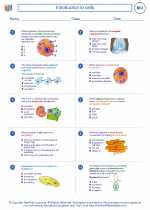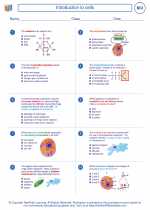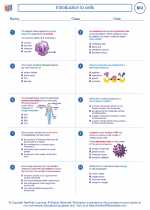Squids: Biology and Anatomy
Squids are fascinating marine animals belonging to the class Cephalopoda, which also includes octopuses and cuttlefish. They are known for their streamlined bodies, large eyes, and tentacles. Let's explore the biology and anatomy of squids in more detail.
Anatomy of a Squid
1. Mantle: The mantle is the main part of the squid's body and is where the internal organs are housed.
2. Tentacles and Arms: Squids have eight arms and two longer tentacles, which they use for capturing prey and locomotion.
3. Siphon: The siphon, also known as the funnel, is used for jet propulsion, allowing squids to move rapidly through the water.
4. Beak: Squids have a hard, sharp beak made of chitin, which they use to grasp and tear their prey.
5. Eyes: Squids have complex eyes that are similar to vertebrate eyes, allowing for excellent vision in the ocean's depths.
Life Cycle and Behavior
Squids have a relatively short lifespan, typically living for only 1-2 years. They are highly mobile and are known for their swift movements and agile hunting behavior. Squids are also capable of rapid color changes, allowing them to camouflage themselves from predators and prey.
Reproduction
Female squids lay their eggs in gelatinous masses, which are often attached to the seafloor. After hatching, squid larvae undergo a period of growth and development before reaching maturity.
Ecological Importance
Squids play a crucial role in marine ecosystems, serving as a food source for various predators, including fish, birds, and marine mammals. Additionally, squids are important prey for commercially valuable species, making them a key component of the ocean's food web.
Study Guide
When studying squids, it's essential to focus on the following key areas:
- Describe the anatomical features of a squid, including the mantle, tentacles, siphon, beak, and eyes.
- Explain the reproductive process of squids, including egg-laying and larval development.
- Discuss the ecological importance of squids in marine ecosystems and their role in the food web.
- Compare and contrast the behavior and characteristics of squids with other cephalopods, such as octopuses and cuttlefish.
By understanding these fundamental aspects of squid biology, you can gain a comprehensive insight into these remarkable marine creatures.
.◂Biology Worksheets and Study Guides High School. Introduction to cells

 Worksheet/Answer key
Worksheet/Answer key
 Worksheet/Answer key
Worksheet/Answer key
 Vocabulary/Answer key
Vocabulary/Answer key
 Vocabulary/Answer key
Vocabulary/Answer key
 Vocabulary/Answer key
Vocabulary/Answer key
 Vocabulary/Answer key
Vocabulary/Answer key
